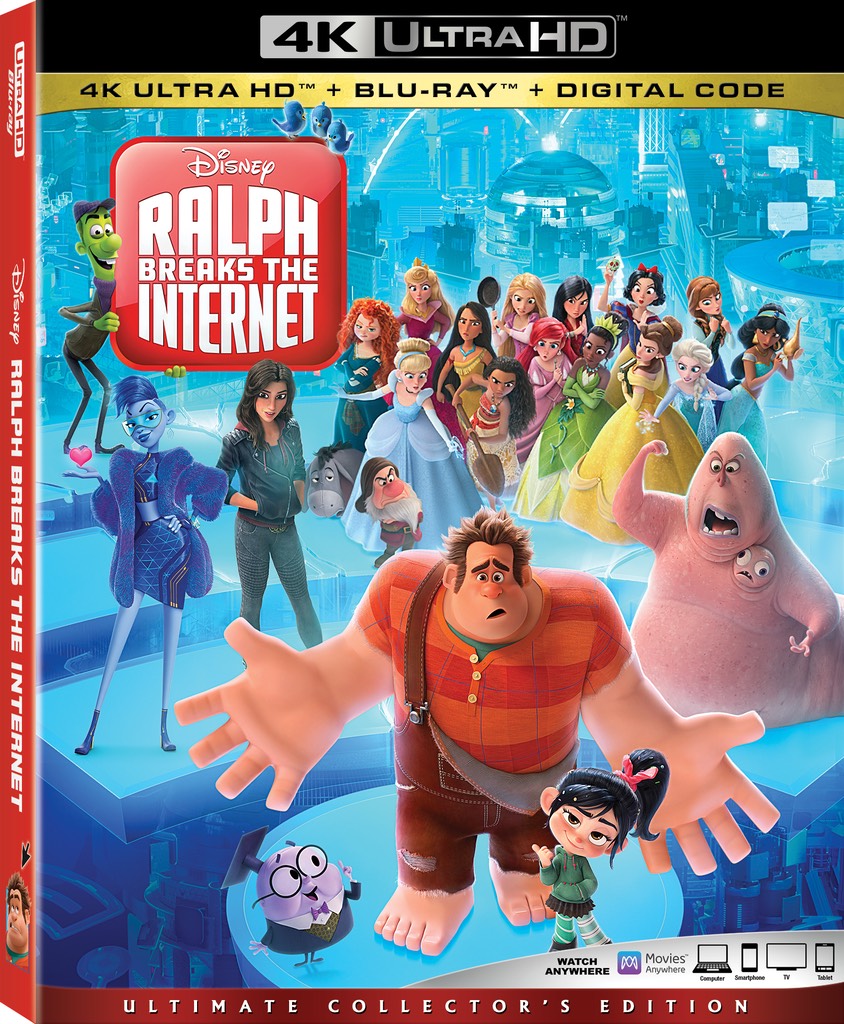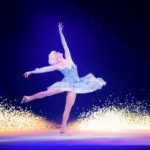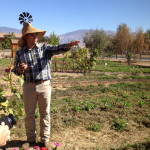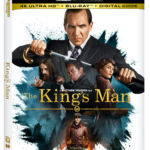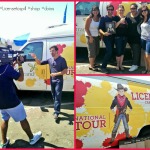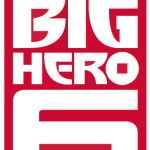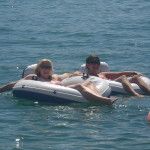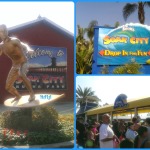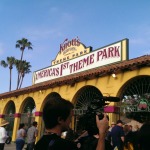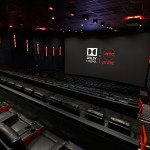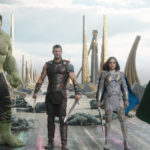Celebrating the In-Home Release of “Ralph Breaks the Internet”
By Melanie Gable
*I was invited as media to visit Walt Disney Animation Studios to learn more about the digital and Blu-ray releases of “Ralph Breaks the Internet.” All thoughts and opinions are my own.*
It was a marathon of magical experiences on Tuesday, Jan. 5 at Walt Disney Animation Studios when members of the media were invited to attend a whirlwind series of presentations from the talent behind “Ralph Breaks the Internet”! Erin invited me to cover the event for her, and I was thrilled to visit the studios and learn more about the making of the film, which will be released on Digital 4K Ultra HD and Movies Anywhere on Feb. 12 and Blu-ray on Feb. 26.
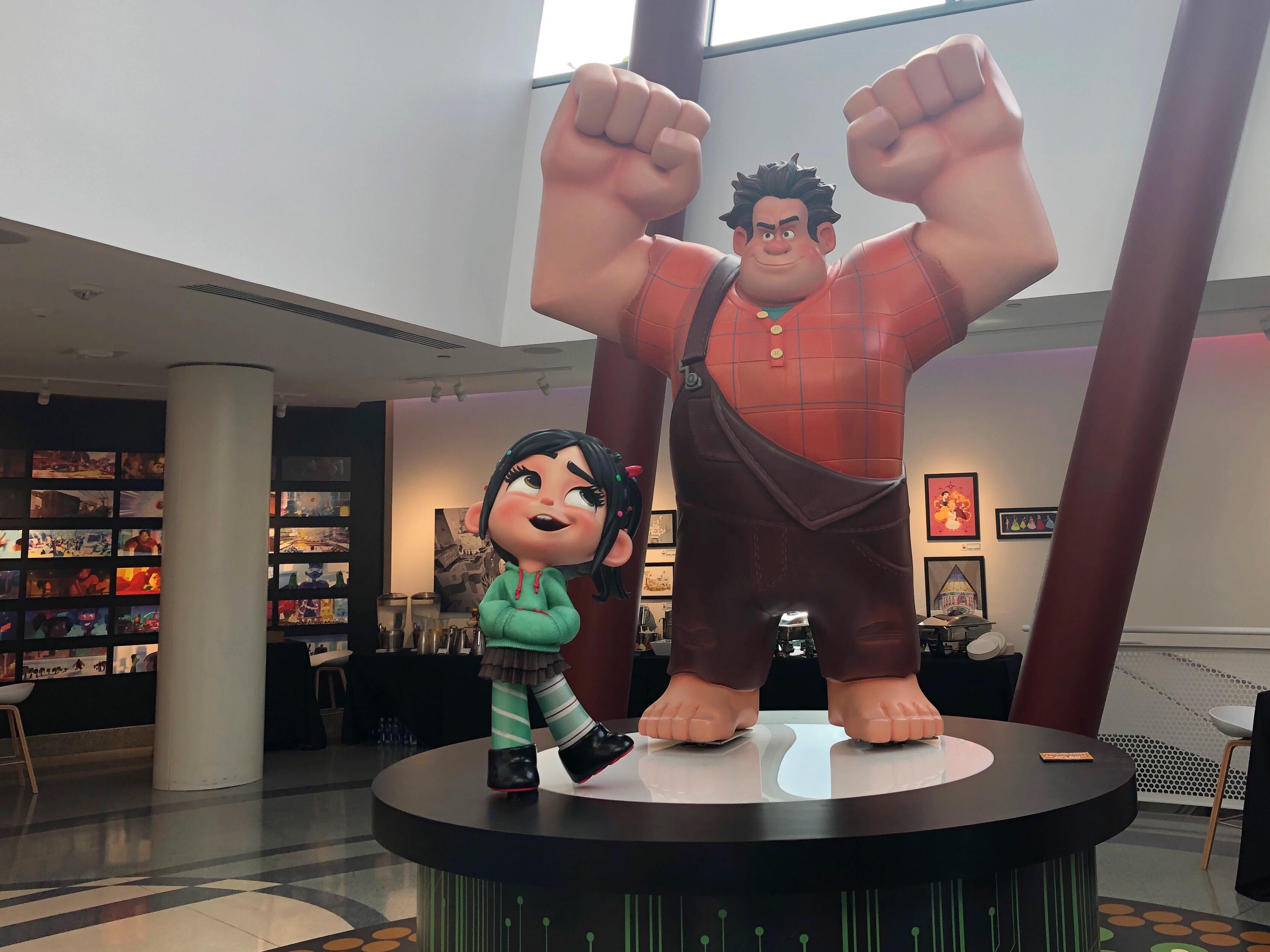
The day began with breakfast in the studio lobby, where we were surrounded by beautiful concept art from “Ralph Breaks the Internet.” A giant sculpture of the movie’s lead characters, Ralph and Vanellope, towered over us as we perused the artworks, which included character designs, expansive background scenes, and prop models used during film production, such as the “Sugar Rush” steering wheel and “Pancake Milkshake” mystery boxes.
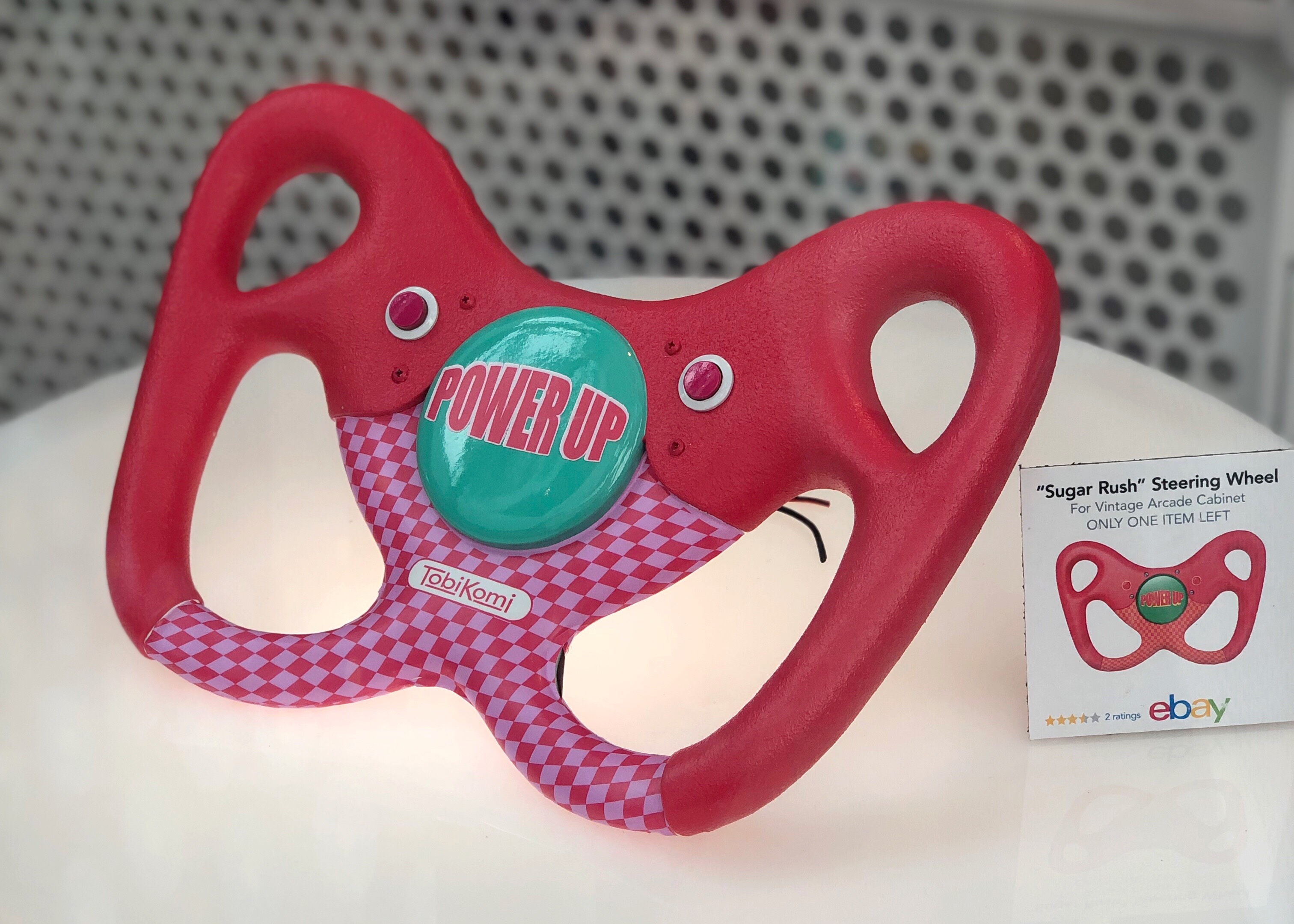
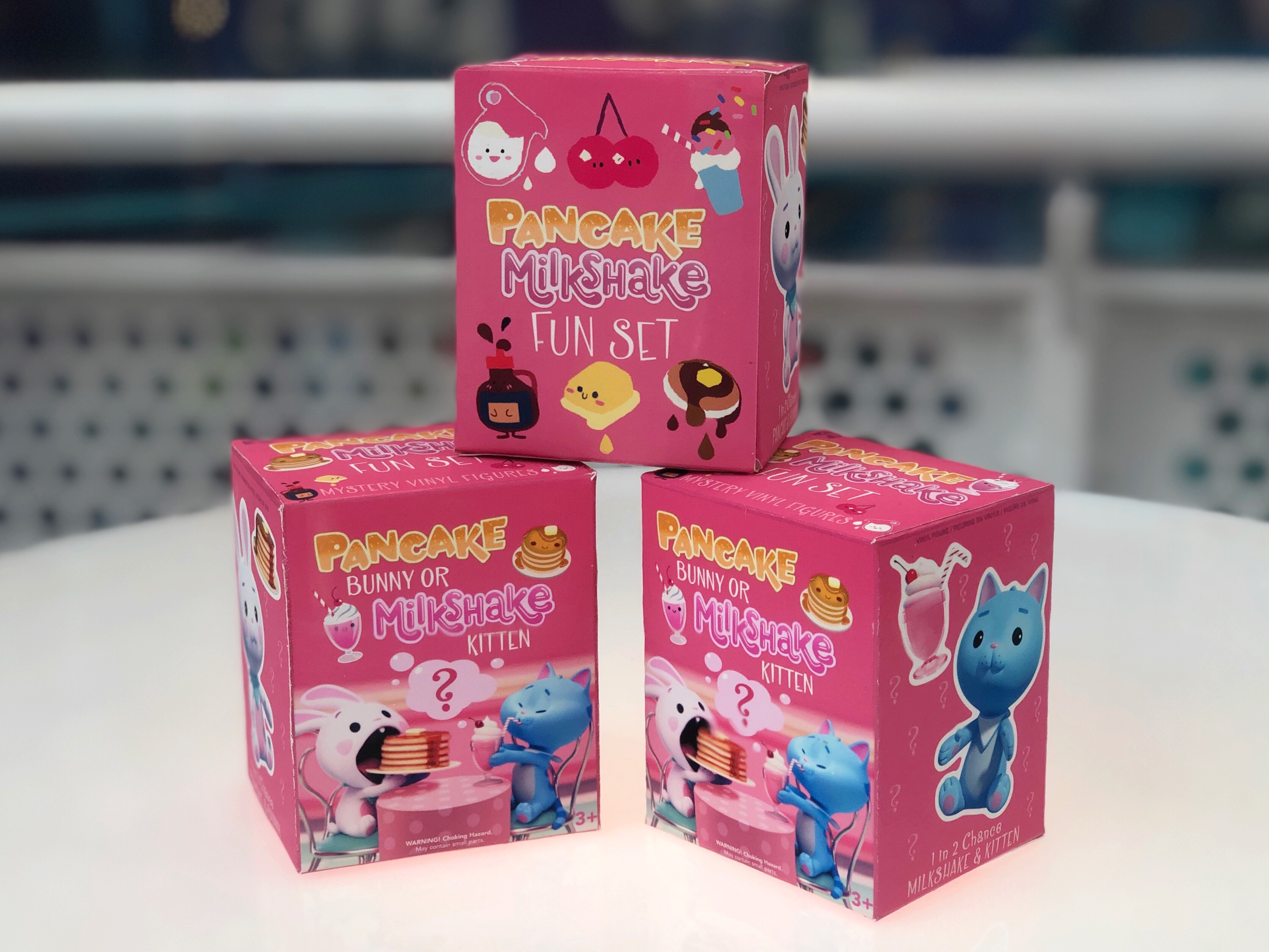
We were soon led into a screening room to watch a showcase of “Ralph Breaks the Internet” digital and DVD bonus features. Producer Clark Spencer introduced the two pieces: the first revealing a few of the many Easter eggs hidden in the movie, and the second about building the visual world of the Internet for Ralph and Vanellope’s journey.
Sharp-eyed viewers searching for Easter eggs can spot hidden Mickeys, references to past Disney animated features such as “Frozen,” “Big Hero 6,” “Zootopia,” and “Moana,” and the number A113 – the graphics and animation classroom at California Institute of the Arts, alma mater of many Disney animators. The movie’s directors even had favorite Easter eggs from the movie. Rich Moore loved seeing some of legendary animator Mark Henn’s hand-drawn characters strolling around the Oh My Disney section of the Internet, and Phil Johnston enjoyed a reference to “Zootopia” character Bellwether’s “World’s Greatest Dad Assistant Mayor” mug during Ralph’s viral video scene.
Spencer then introduced the next bonus feature segment, all about the film’s production process. “When we started talking about making a sequel to ‘Wreck-It Ralph,’ we really wanted to take the audience to a completely different place,” he said. “When the idea of the Internet came into being, we really felt like we had something there, something that made it worth doing a second story with these two incredible characters.” But how were the filmmakers going to go about turning the Internet into a believable, visual world with which Ralph and Vanellope could actually interact?
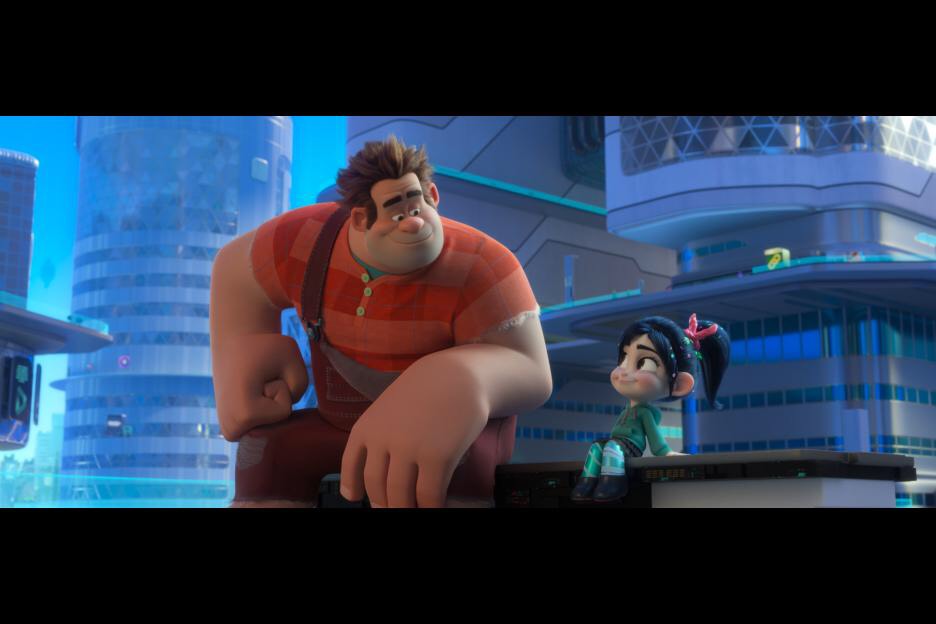
The segment features interviews with directors Moore and Johnston, animators, story artists, and more who share many of the inspirations, in-jokes, and production secrets behind the making of “Ralph Breaks the Internet.” In one segment, Moore and Johnston shared that they consulted with some of Disney’s technical talent and realized the world of the Internet was much more tactile than they had initially envisioned. The filmmakers’ research for the movie included a visit to One Wilshire, a data center in downtown Los Angeles that houses actual communications boxes and huge cables that provide a highway for massive amounts of Internet traffic. In their own quest for inspiration, animators broke apart actual computer pieces and studied the circuitry, which inspired the design for the bustling Internet metropolis visited by Ralph and Vanellope. They even consulted with stunt driver Jeremy Fry and drove cars at a racing facility to gain firsthand knowledge for creating the “Slaughter Race” sequences.
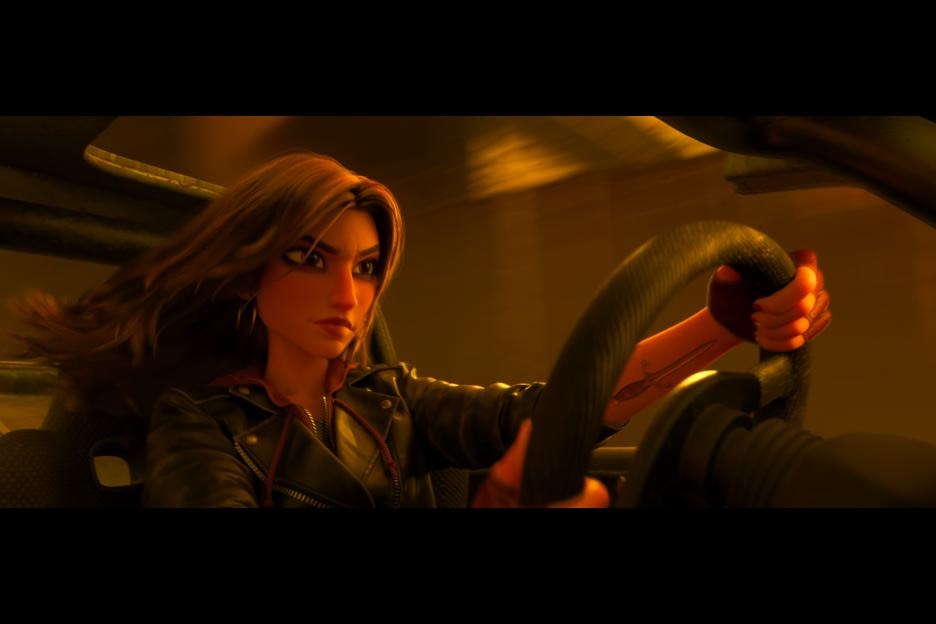
It was so much fun watching a preview of the features and gaining more insight into the complex world of the movie. (My favorite segment was about the creation of the iconic princess scene!) Moore and Johnston appeared in person at the end of the showcase for a Q&A and spoke fondly about the actors and artists they worked with during production and shared some of their favorite moments from the film.
Next on the agenda was a visit to a Disney computer training lab to enjoy a firsthand experience animating Vanellope! Co-Head of Animation Renato dos Anjos and Rigging Supervisor Nicklas Puetz began by explaining the meaning of “rigging,” which is creating a digital, three-dimensional rendering of a character or object that can be animated. First, the art department provides final 2D designs for the characters to the modeling department, where artists then sculpt 3D models of the characters and pass them on to the rigging department, which creates a skeleton, musculature, layers of skin or fur, and clothing for the character. The fully rigged characters are then sent to the animation department to be brought to life for the movie.
Puetz circled the room coaching all of the honorary animators while dos Anjos explained how to use the computer program to pose Vanellope and give her a few simple movements to perform. I’ll confess that rigging/animation requires great skill and precision, and many of our final animations looked pretty awkward, but they weren’t too bad for a half hour of training! When I was kid I wanted to be a Disney Animator when I grew up, so getting a hands-on rigging/animation lesson from Disney artists was a little dream come true.
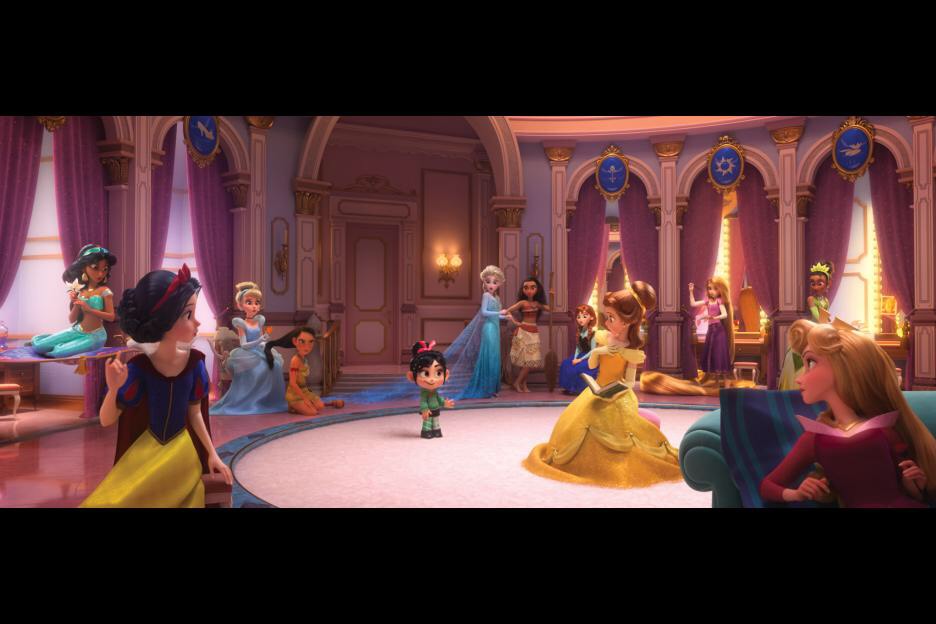
After rigging, it was time to learn more about the creation of the film’s visual effects, including “Ralphzilla,” the studio’s most technically challenging character to date. We met with Associate Producer Brad Simonsen, Technical Supervisor Ernie Petti, and Visual Effects Supervisor Scott Kersavage, who shared the challenges and triumphs of working on the expansive universe of “Ralph Breaks the Internet.”
The visual effects department had to bring three worlds to life: the game environments of “Wreck-It Ralph,” the “real” world of Litwak’s Arcade, and the Internet. But within those worlds were many smaller settings, as Ralph and Vanellope visit individual games and websites throughout the film. Not only were there 150 master sets to create and manage, but the complexity of the Internet world meant that some scenes had around 100,000 individual animated elements. To put it in perspective, “Wreck It Ralph” had 223 characters and 421 variants of those characters, while “Ralph Breaks the Internet” had 434 characters with 6,752 variants!
About a year into production, Simonsen, Petti and Kersavage received script pages containing the first mentions of “Ralphzilla,” a gargantuan, monster-like embodiment of Ralph’s insecurities made up of millions of Ralph clones. Though the prospect of creating such a complex character was exciting for the visual effects team, it also posed unprecedented technical challenges. The filmmakers studied beekeepers and the movements of groups of ants to animate the crawling Ralph clones that make up Ralphzilla’s body structure. The final Ralphzilla stood the real life equivalent of 783 feet tall, with the number of clones topping out at 5,443,098 – more than the entire population of Los Angeles! The studio broke new technical ground with “Ralph Breaks the Internet,” and the dazzling results are a testament to their efforts.
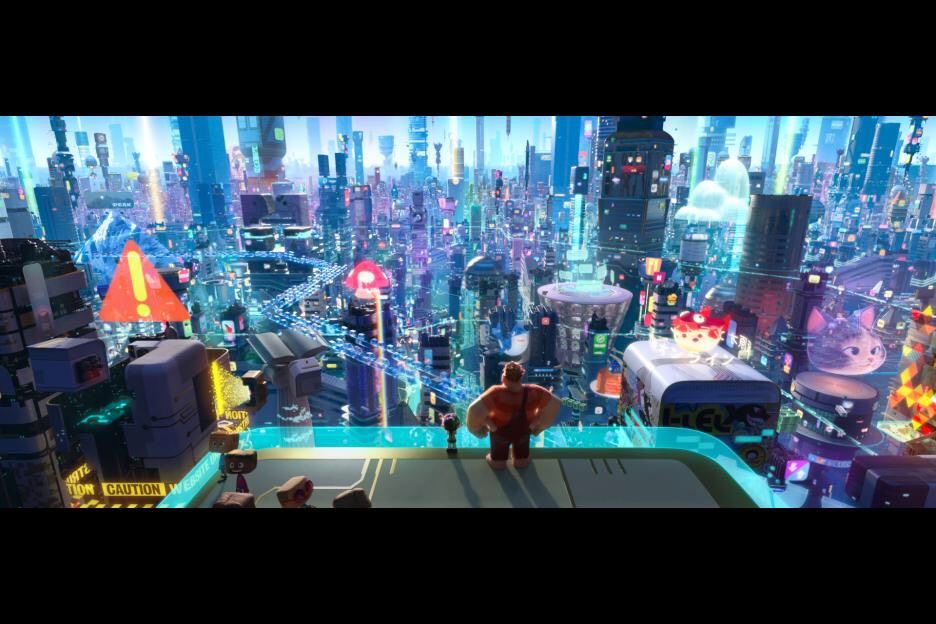
But where would all of that beautiful animation be without the vocal talent that brings the characters to life? For our final session of the day we had the opportunity to sit down with Emmy-nominated actor Alan Tudyk, voice of Knowsmore in “Ralph Breaks the Internet,” to discuss his work in the film and his relationship with Disney. In addition to live action movies, T.V. shows, and theatre, Tudyk has done voice work throughout his career. His relationship with Walt Disney Animation began with “Wreck-It Ralph,” in which he played King Candy, a charmingly eccentric arcade game figurehead hiding a villainous past. (He won an Annie Award for Voice Acting in a Feature Production for his portrayal of the character.) He worked with Jennifer Lee on “Wreck-It Ralph,” who went on to direct “Frozen” and cast Tudyk as the Duke of Weaselton. Tudyk has since voiced characters in Disney movies and T.V. series such as “Rogue One: A Star Wars Story,” “Big Hero 6: The Series,” and “Star vs. the Forces of Evil,” as well as being cast in every subsequent Disney animated feature film. He has even informally become known as Walt Disney Animation’s “good luck charm.”
But King Candy met his demise at the end of “Wreck-It Ralph,” so how were the filmmakers going to feature Tudyk in the sequel? When the character of Knowsmore, a smarty-pants search engine, was written into the script, the filmmakers knew the talented Tudyk was the one to bring the character to life. Knowsmore’s design was based in part on Professor Owl, a bespectacled blue owl featured in multiple Disney animated shorts, and his particular voice was a new one for Tudyk, which was found through experimentation in the recording booth using Truman Capote, Droopy Dog, and a bit of Jerry Lewis as vocal inspirations. He was also given the freedom to improvise, especially with Knowsmore’s hilariously rapid-fire search results.
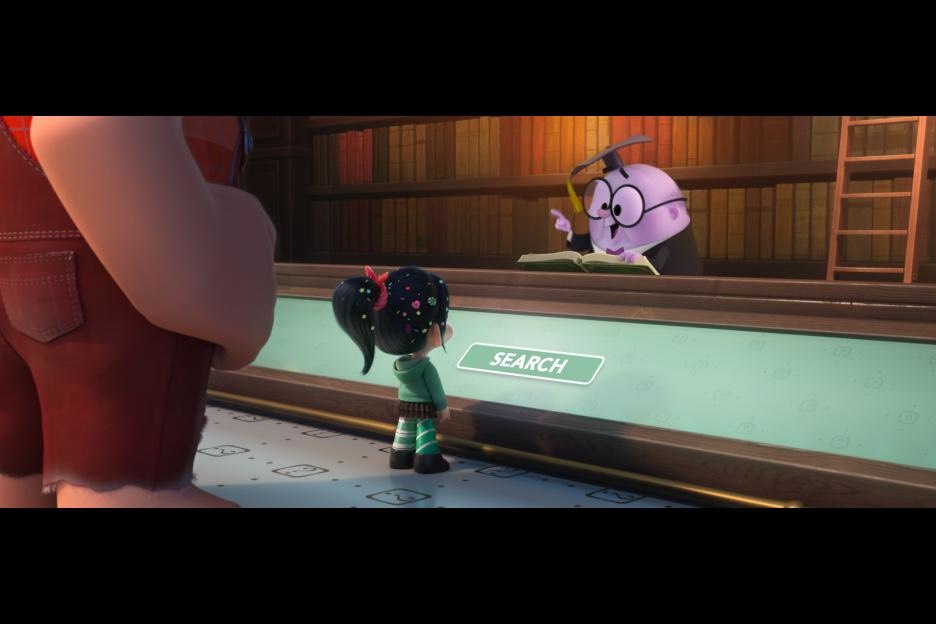
“The way that Disney makes movies, they grow as it goes along,” said Tudyk. “Certain things get cut and new characters come about, so you’re on a journey with it as well. It’s almost like doing a T.V. show in the sense that your character is always growing, there’s always new stories, you’re learning new things about your character. It’s constantly challenging, but fun.” Interviewing Tudyk is fun, too, as he would often slip into the voices of his characters and had us cracking up with anecdotes about his career and his time in Disney’s recording booths.
There’s a wealth of great content to be found on the bonus features of the in-home release of Disney’s “Ralph Breaks the Internet,” so be sure to check it out for yourself! The film will be packaged and released in multiple formats, allowing families to watch the movie instantly and on a variety of devices. It will be available on Digital 4K Ultra HD, HD, SD, and the Movies Anywhere app on Feb. 12. Starting Feb. 26, Ralph fans can purchase the 4K Ultra HD Combo Pack (4K Ultra HD, Blu-ray, and Digital Copy), a Multi-Screen Edition (Blu-ray, DVD, and Digital Copy), or a single DVD.
Huge thanks to Walt Disney Animation for hosting this awesome event, and to Erin for inviting me to cover for her!
